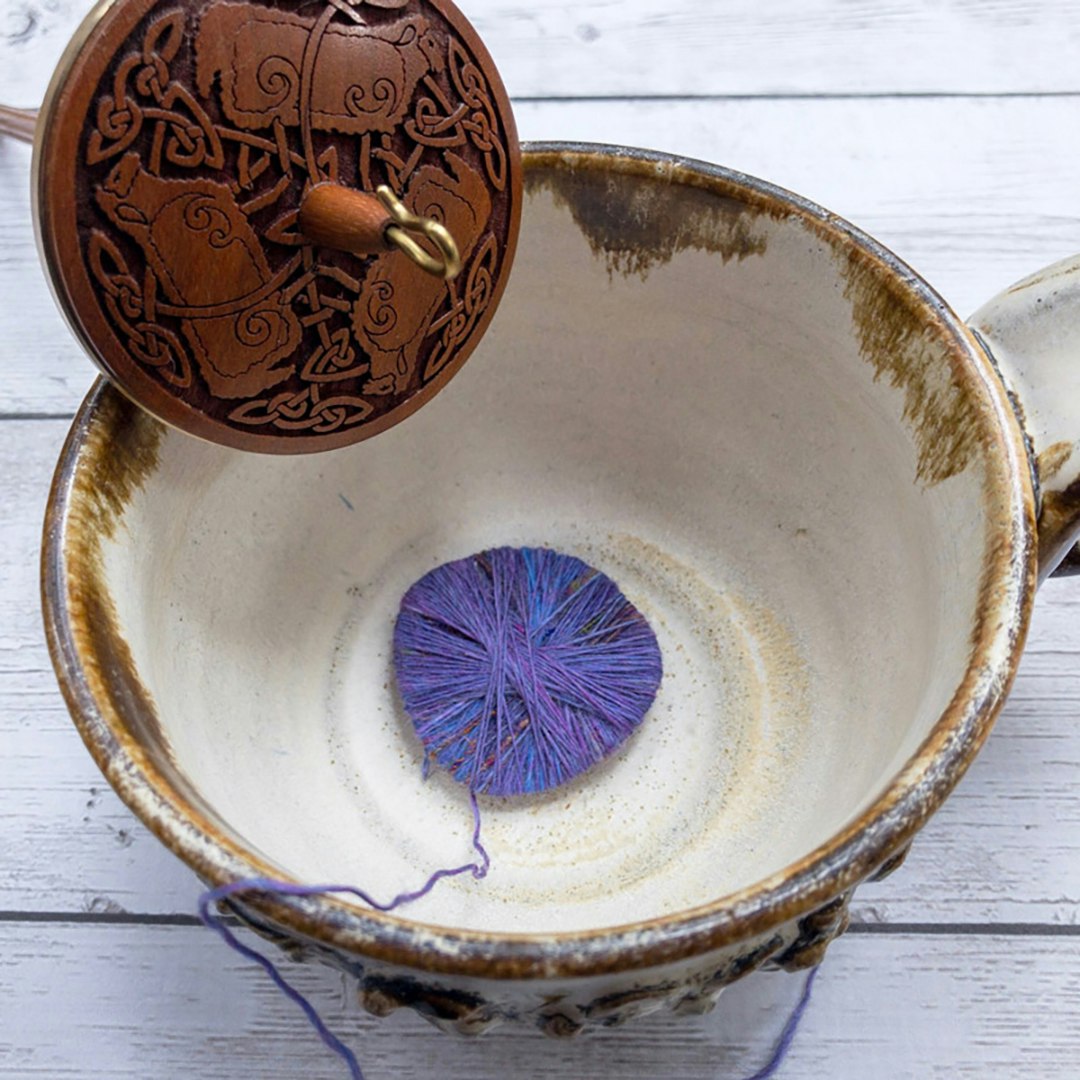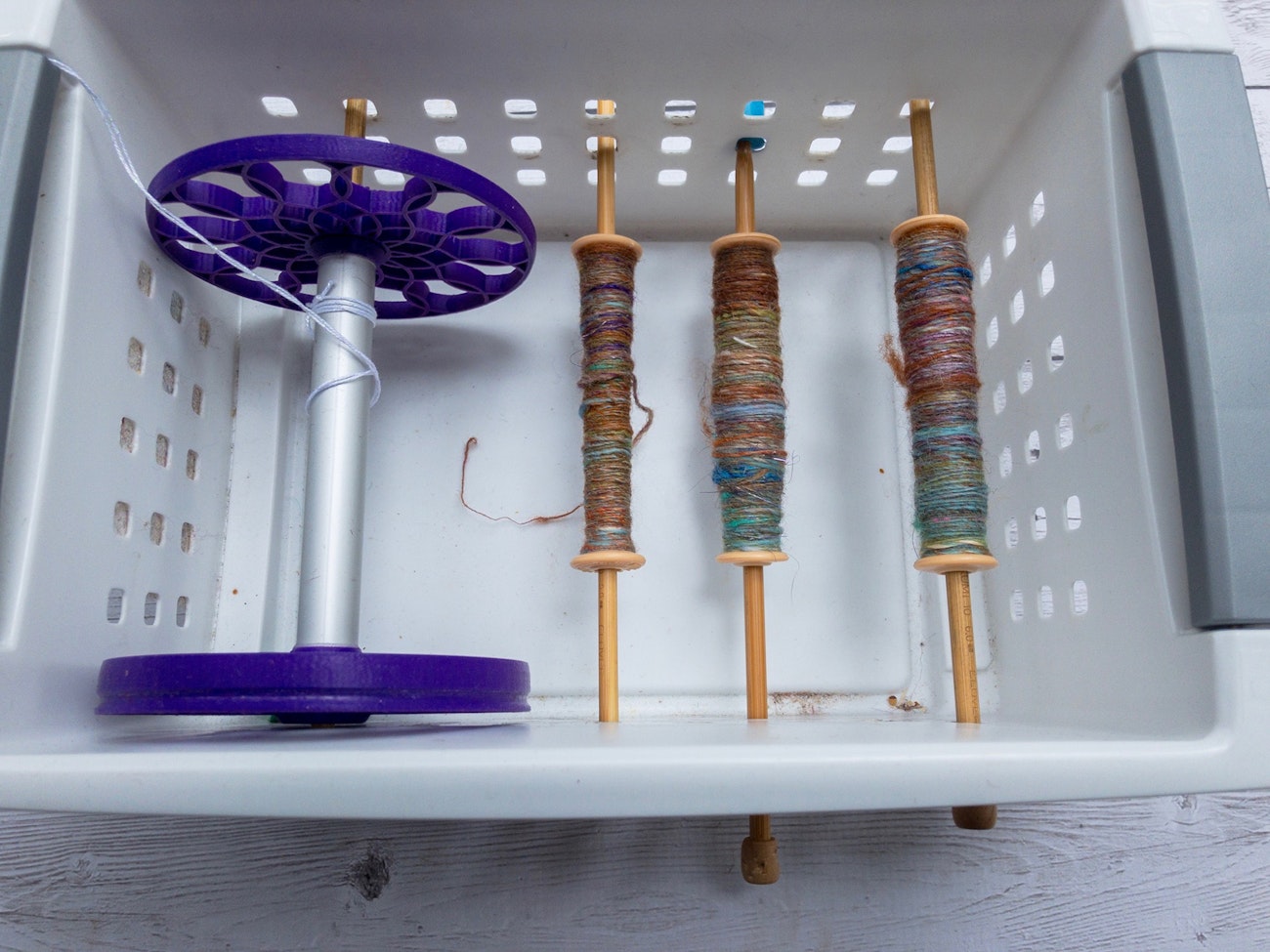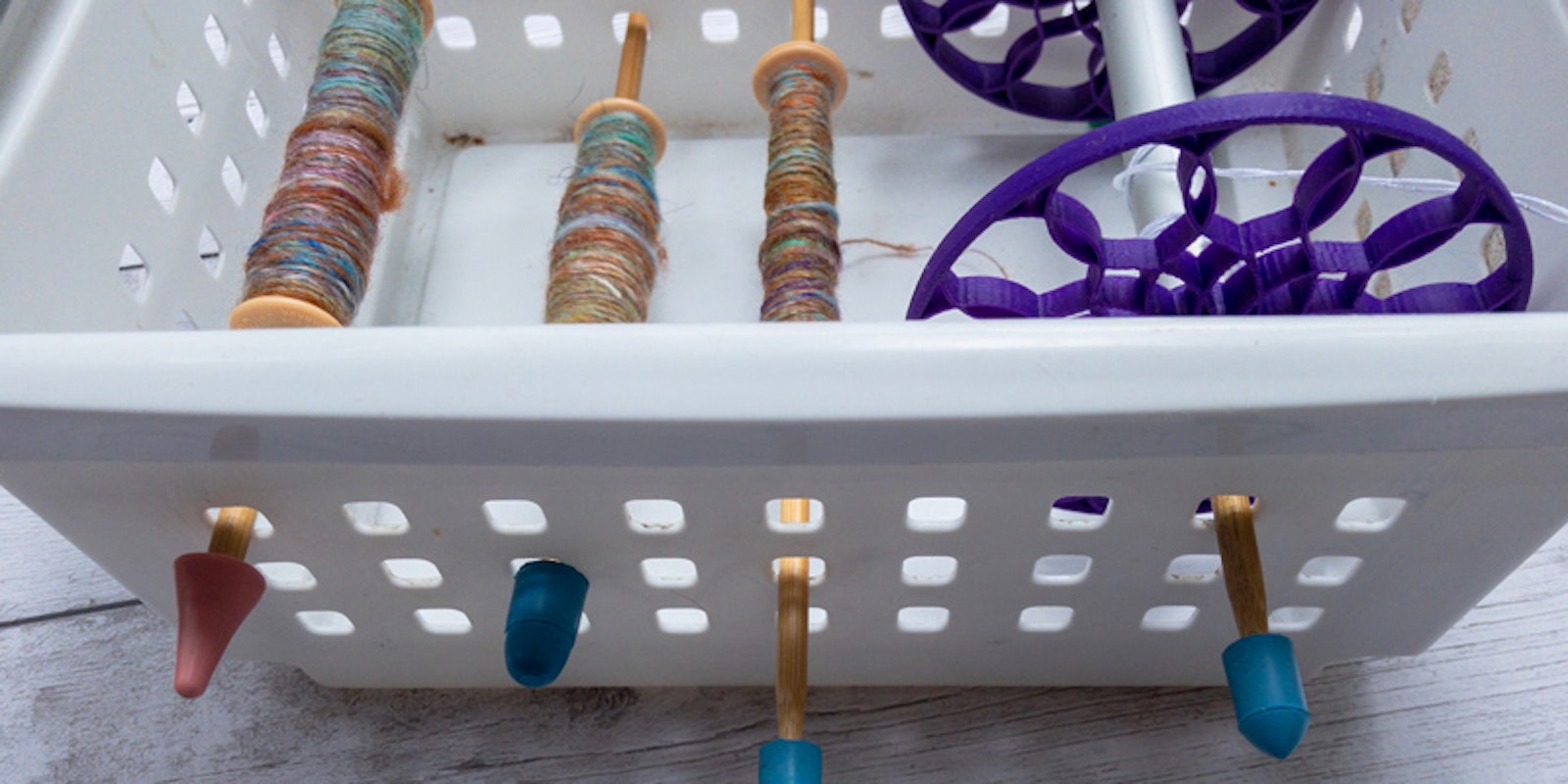Last time, I wrote about my three favorite ways of winding my singles off the shafts of my spindles, improving the yarn’s quality and making it easier to handle for plying. As promised, I’m back to discuss the how-to portion of the plying process, or what I do after winding off. (The following are my own personal preferences after much experimentation. Feel free to use them as guidance or as a starting a point for your own ideas!)
But first, you may wonder . . .
Should I ply with a wheel or a spindle?
The choice is yours. When I want to spend more hands-on time with a special spin, I’ll grab a plying spindle, one with a long shaft for holding all that plied yarn while still leaving room to flick off the thigh—for which your wrists will thank you. Other times, I’ll take a seat at the wheel.
If you are using a suspended or drop spindle, try to find one that’s heavier than the spindle(s) on which you spun your singles, even if only slightly. You’ll be able to add appropriate twist with less effort this way. And, since plied yarn is so much stronger than a singles yarn, this is a good time to enjoy some of those heavier spindles you’ve likely collected but don’t get to use.
 A heavy ceramic mug keeps a disk full of singles from flopping around when I’m plying yarn.
A heavy ceramic mug keeps a disk full of singles from flopping around when I’m plying yarn.
Managing your singles balls or disks
When I’m ready to ply, I place my wound ball(s) of singles yarn on the floor inside a heavy glass or mug, thereby keeping the yarn clean and safe from ensnarement on the nearest table leg. If I’m working on a 2-ply, each ball gets its own glass. Sometimes, I ply from here, tensioning the yarn with my fingers. Other times, I’ll first create a plying ball by winding the two strands side by side onto yet another ball or solid core (or even into a yarn cake, using a ball-winder). This step helps in avoiding those aggravating pigtails in your finished yarn.
Speaking of plying balls, I have a spindle-loving friend who almost exclusively chain-plies (Navajo-plies) her yarn. She creates a hand-chained ply ball for herself, then runs the yarn through one of her wheels to add the twist, and she says that the extra step pays off in a well-controlled, stress-free end result. Since I personally enjoy the rhythm of actual chain-plying at the wheel, I do it directly from my ball, disk, or bobbin of singles.
When I’ve wound off onto cardboard disks, I usually hold the disks in my hand while plying. (I have large hands; you could cut your disks smaller to suit your needs.) Other times, I employ one of the above methods.
Plying doesn’t get any easier than when I’ve wound off onto weaving bobbins. Just as you would a full-sized bobbin, pop the weaving bobbin onto your nearest lazy kate.
 My homemade lazy kate is my favorite.
My homemade lazy kate is my favorite.
So there you go—a starting point for figuring out your favorite way of plying yarn from spindles! Enjoy the process!
Debbie Held is a freelance writer, self-proclaimed spinster, and an international spinning instructor. She’s been blending wool and words since 2015, when she merged her career in journalism with her handspinning obsession—and she hasn’t stopped talking (and writing) about spinning since.
Originally published July 6, 2018; updated June 20, 2022.

